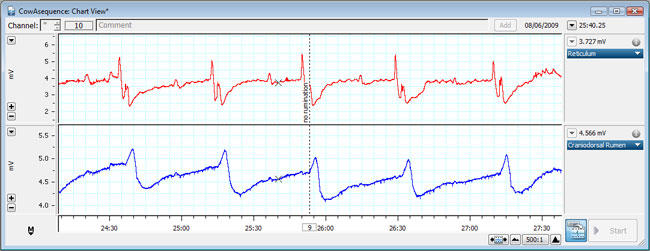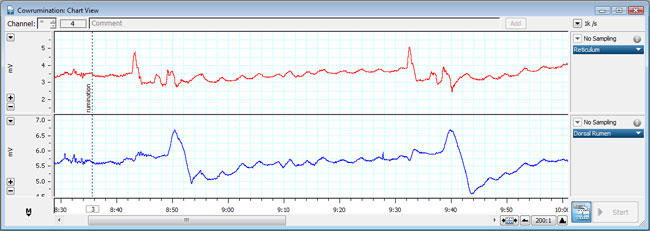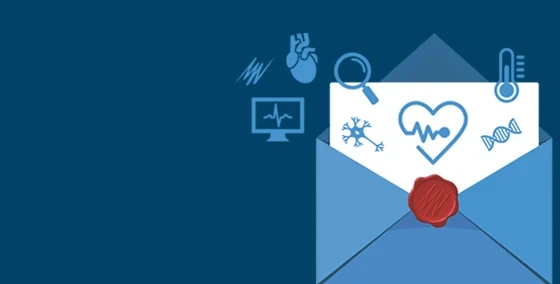Veterinary students at the University of Copenhagen (KU) are using PowerLab with LabChart software to observe and understand the remarkable digestive system of ruminant animals. Their educators have used the flexibility of LabChart to design a highly specialized teaching exercise where students measure and analyze the stomach contractions of a stable of Jersey cows.
Cows are ruminant animals, which means they regurgitate, re-chew and re-swallow their food as part of the digestive process. As well as “chewing their cud”, ruminants possess a stomach with four chambers, as compared with a “mono-gastric” human. Veterinary students need to understand how cows and other ruminants digest feed as their extraordinary physiology leads to specific problems in the digestive tract, often related to excess gas and acid.
KU's exercise allows students to investigate how the timing, rate and strength of contractions in a cow's stomach relate to how the animal is fed. Students also learn more about how stomach motility relates to a cow’s habits of rumination and eructation (more commonly referred to as belching).
In groups of 20, students visit a farm outside Copenhagen to record and compare contractions from two different cows, each following a different diet (Cow A is fed only hay, whilst Cow B eats both grain and hay). Each cow has two custom-made pressure transducers placed in its stomach. The transducers are connected to a PowerLab system and laptop computer running LabChart software.
Comparing Cow A and Cow B
The transducers in Cow A are placed to allow students to observe the primary series of contractions, referred to as Sequence-A. Sequence-A moves the food around and between two of the cow’s stomach chambers. The first transducer is positioned in the reticulum, whilst the second is placed in the cranial rumen, one of the muscular sacs that make up the rumen.

Above: A LabChart recording displaying a series of A-Sequence contractions. The A-Sequence is characterised by two contractions in the reticulum followed by one contraction each in the cranial, dorsal and ventral rumen sacs.
Like Cow A, Cow B's first transducer is positioned in the reticulum. However, its second transducer is placed in the ventral rumen, a different sac within the rumen. This position allows students to observe a secondary contraction series, known as Sequence-B. Sequence-B is noteworthy because it leads to eructation, where the cow expels excess methane produced during the digestive process.
After the cows are fed, the students are able to observe the stomach movements related to rumination, where the cardia (the junction between the oesophagus and the stomach) is inundated with semi-digested feed from the recticulum on its way back to the cow’s mouth for re-chewing and re-swallowing.

Above: A LabChart recording showing the pressure changes in a cow's fore-stomach during rumination. Rumination is characterized by an additional reticulum contraction preceding the A-Sequence.
LabChart Analysis The KU students use LabChart's Marker and Data Pad tools to extract details about the strength, timing and frequency of each cow's contractions. At this point, students are able to better understand the consequences of Cow B’s more processed diet. Less complex, more processed feed decreases the motility in Cow B’s stomach. Similarly, a food’s starch content will affect the chemical balance within the digestive system, and also affect motility.
